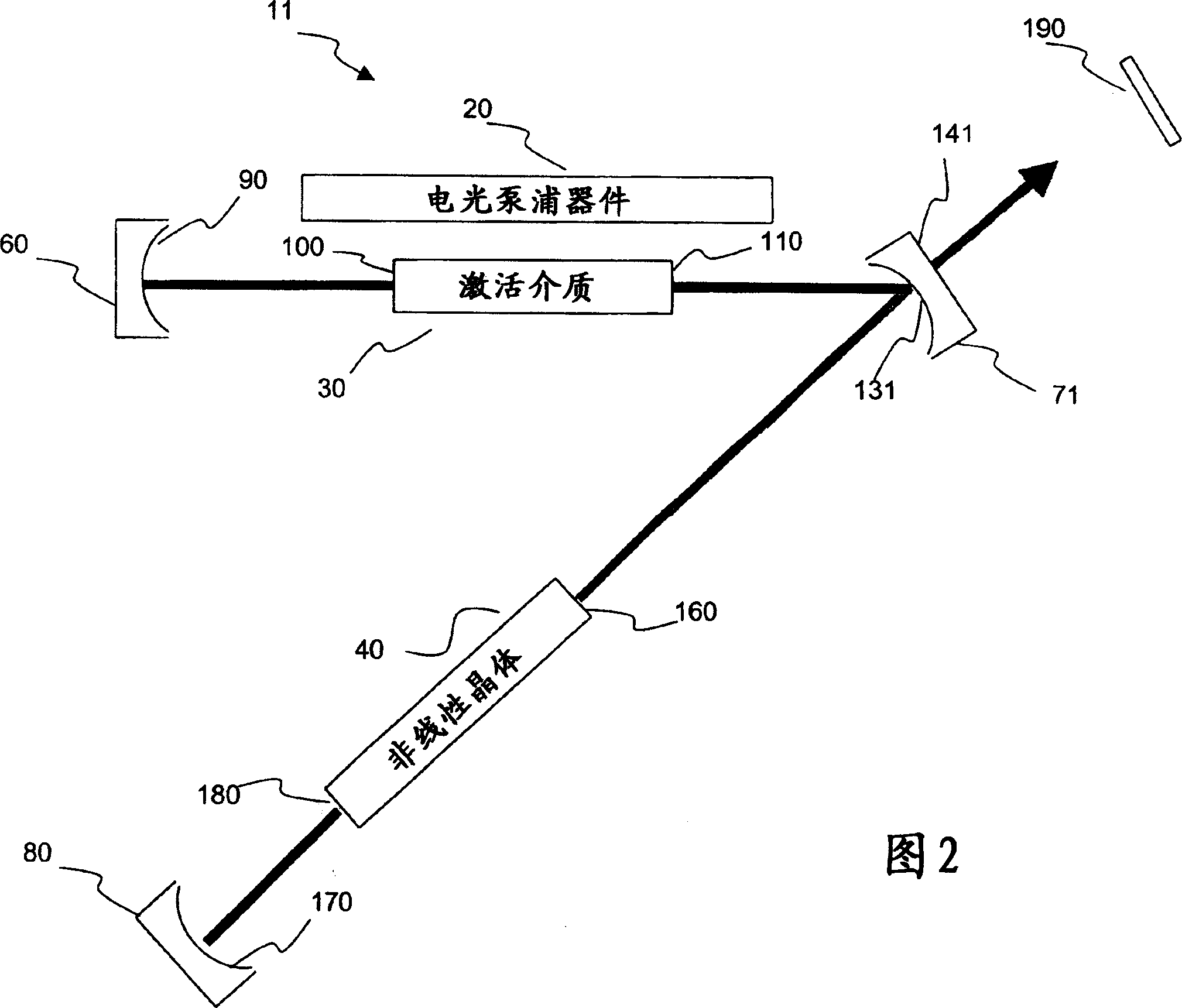Green welding laser
A laser and beam technology, applied in lasers, laser welding equipment, laser components, etc., can solve problems such as excessive peak energy application, inconsistent welding structure, evaporation of metal and alloy components, etc.
- Summary
- Abstract
- Description
- Claims
- Application Information
AI Technical Summary
Problems solved by technology
Method used
Image
Examples
Embodiment Construction
[0011] One embodiment of the present invention provides a method and apparatus for generating an Nth harmonic frequency beam (N≧2). According to one embodiment, the harmonic optical resonator comprises an electro-optic pump device (e.g., laser diode, flash lamp, etc.) that generates output pump radiation that is optically coupled into an active medium disposed within the optical resonator to pump This active medium is pumped and the optical cavity is excited at the fundamental wavelength. In the above embodiments, the nonlinear electro-optic medium can be coupled with the excited fundamental optical mode of the optical resonator to generate harmonic photons. The advantages of the present invention are best understood in the application shown below, for example, in a laser welding system.
[0012] FIG. 1 is a simplified schematic diagram showing an exemplary optical cavity for generating a beam to weld a workpiece 190 . The beam can be pulsed or continuous wave. The describe...
PUM
| Property | Measurement | Unit |
|---|---|---|
| conversion efficiency | aaaaa | aaaaa |
| conversion efficiency | aaaaa | aaaaa |
Abstract
Description
Claims
Application Information
 Login to View More
Login to View More - R&D
- Intellectual Property
- Life Sciences
- Materials
- Tech Scout
- Unparalleled Data Quality
- Higher Quality Content
- 60% Fewer Hallucinations
Browse by: Latest US Patents, China's latest patents, Technical Efficacy Thesaurus, Application Domain, Technology Topic, Popular Technical Reports.
© 2025 PatSnap. All rights reserved.Legal|Privacy policy|Modern Slavery Act Transparency Statement|Sitemap|About US| Contact US: help@patsnap.com



